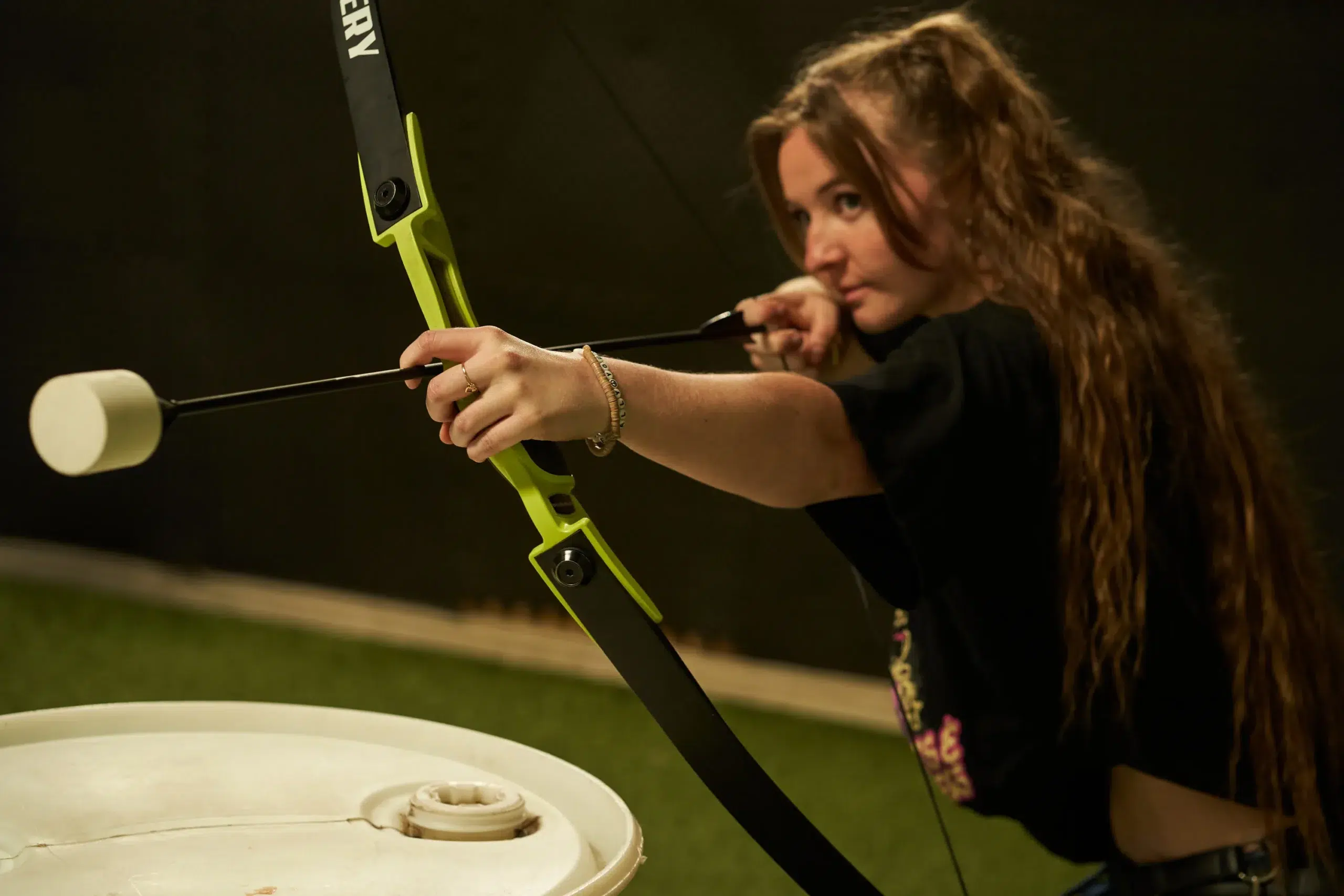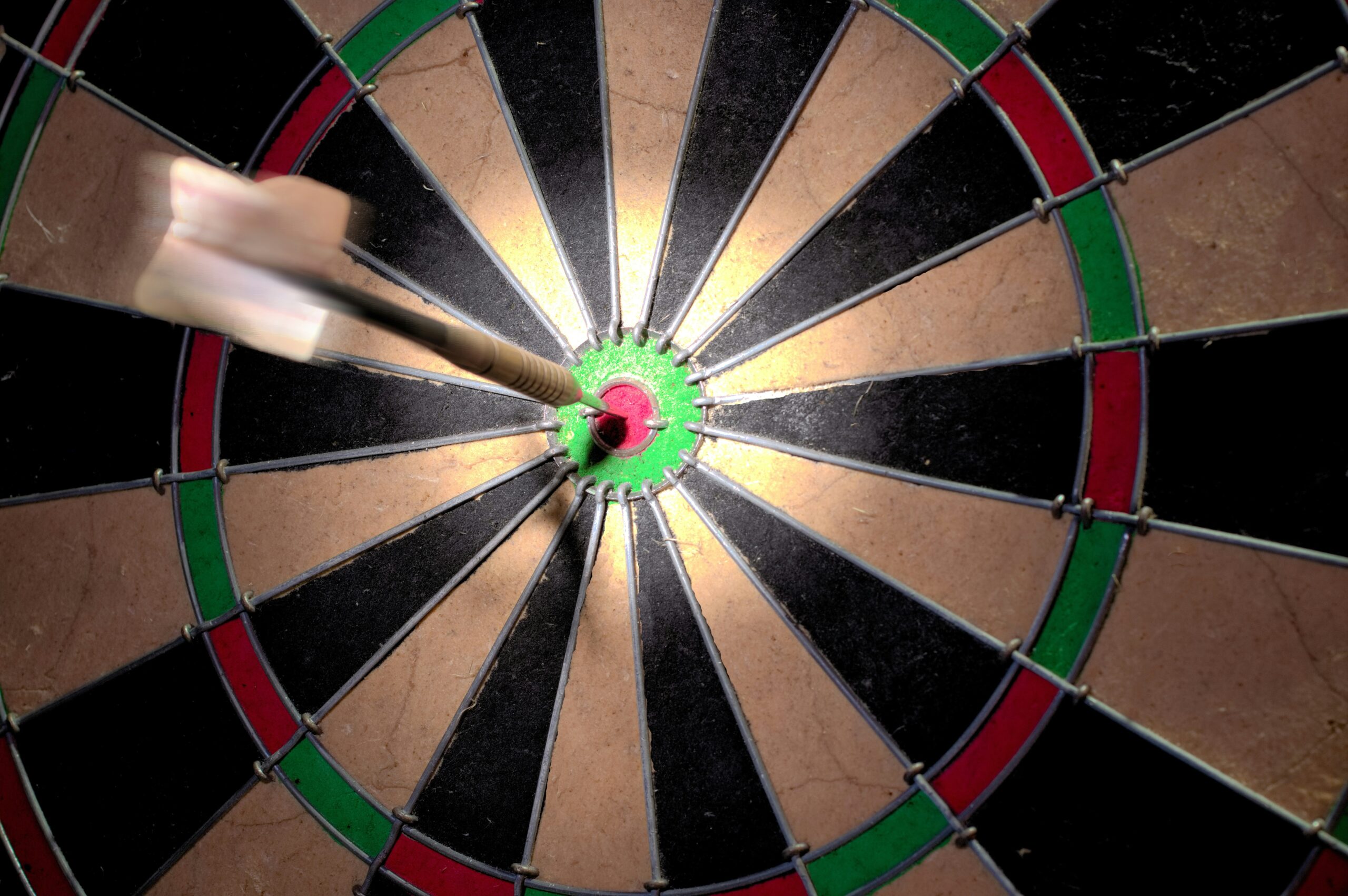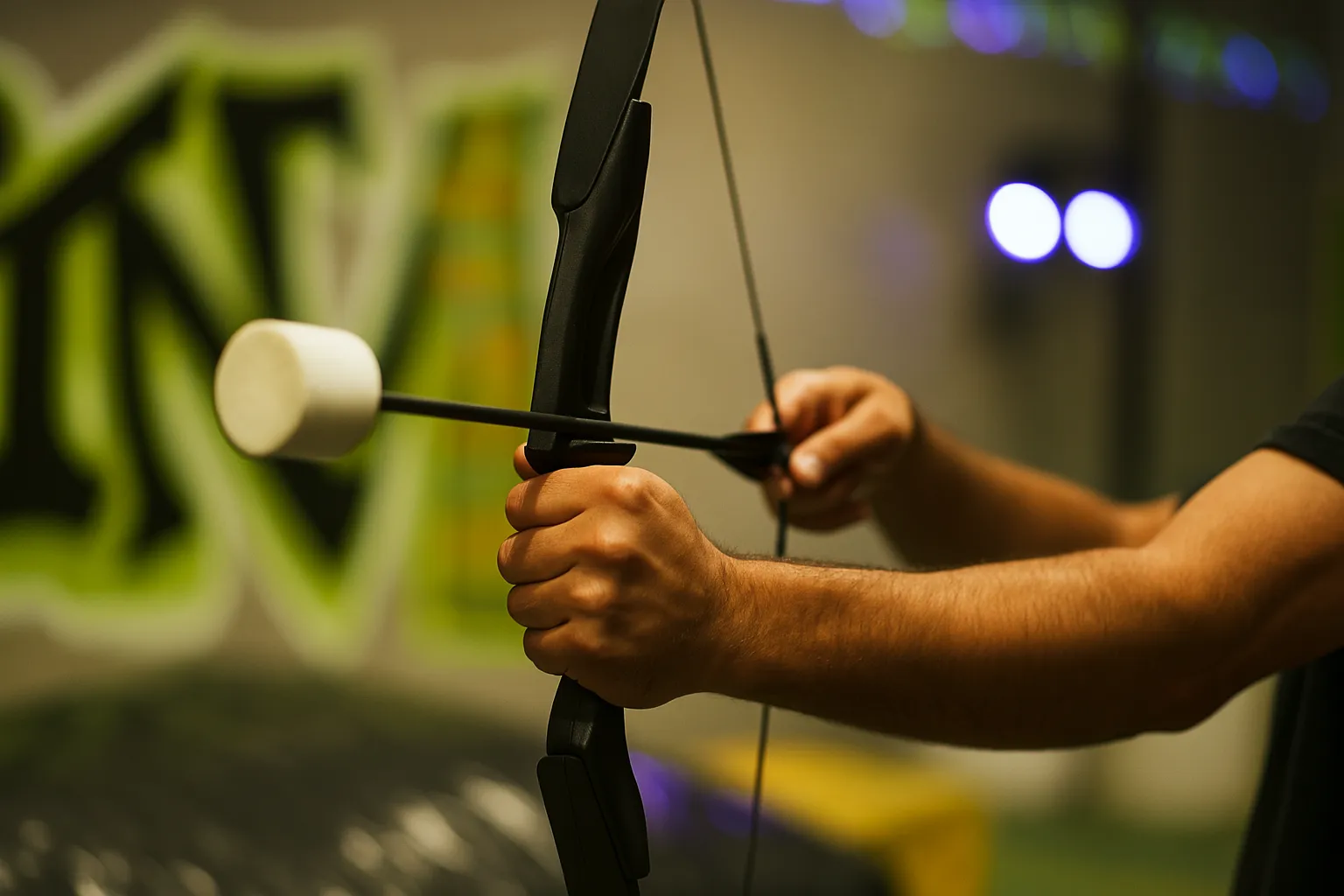Archery Arrow Tag blends the excitement of combat archery with the precision of target archery, using safe, foam-tipped gear for dynamic play. With equipment like recurve bows and compound bows, and safety features such as gloves and soft arrowheads, players get a real bow and arrow experience without the risks. Each match involves dodging, aiming, and coordinating while mastering control over your bowstring. Whether you’re aiming at traditional bullseyes or more advanced knockout targets, variety keeps the game fresh and thrilling. These elements combine to create a fun, safe environment suitable for all ages and skill levels.
Key Takeaways
- Archery Arrow Tag combines elements of combat archery and target archery for engaging gameplay.
- Foam-tipped arrows and gear like gloves and soft arrowheads support safe, high-energy matches.
- Target types—from bullseyes to hoverballs—shape strategy and player movement.
- Bow choices, like recurve or compound, impact control and shooting style.
- A secure bowstring setup enhances accuracy, speed, and in-game performance.
Understanding Archery Arrow Tag Target Fundamentals

Archery Arrow Tag’s success largely depends on the design and use of its targets, which are integral to structuring the game. In this section, the basic rules and underlying principles of the game are discussed, with an emphasis on target functionality and safety.
Defining Archery Arrow Tag and Its Basic Rules
Archery Arrow Tag is a team-based game where players use bows and foam-tipped arrows to tag opponents and hit designated targets. The main objective is to score by striking targets while avoiding incoming shots. To ensure safety, players wear protective gear, and soft-tipped arrows are used to prevent injury. The game is structured with clear zones and boundaries, encouraging players to strategize and move tactically.
Matches are typically fast-paced, promoting teamwork, communication, and quick reflexes. Rules are simple enough for beginners but layered enough for experienced players to develop complex strategies. Game rounds involve elimination, scoring, or objective-based formats. The simplicity combined with action makes Archery Tag a versatile experience for parties and events.
The Role of Targets in Archery Tag Gameplay
Targets play a critical role in how Archery Tag is scored and experienced. They influence player movement, strategy, and the overall intensity of the game. Depending on the size and location of the targets, players may need to change tactics mid-match. Larger targets encourage aggressive play, while smaller or mobile ones require focus and patience.
Some setups include reactive targets that visually respond when hit, adding a layer of feedback to motivate players. Strategic target placement controls the pace of play and encourages creative teamwork. The layout of scoring zones directly affects how players engage with the arena. Targets help create structure and direction during chaotic, high-energy sessions. Their design keeps gameplay fair, exciting, and inclusive.
Safety Considerations for All Archery Arrow Tag Target Types
Every target used in Archery Arrow Tag is selected with safety in mind. Materials like high-density foam, flexible plastics, and reinforced surfaces help absorb impact and prevent ricochet. Targets are carefully mounted to remain stable and minimize unintended movement during matches. These designs reduce the risk of injury, especially in games involving fast shots and close-range play.
Visual indicators and safe zones are often used to guide shooting and reduce confusion in crowded arenas. All equipment, including targets, is regularly inspected for damage or wear to ensure continued safe use. Safety protocols like spacing rules and protective gear complement the targets’ construction. Together, they provide a secure environment where players can focus on fun. Well-designed targets support safe play across all ages and skill levels.
Exploring Different Kinds of Archery Arrow Tag Targets

Archery Arrow Tag offers a range of targeting options that contribute to its broad appeal. This section delves into the various target types used in the game. Each target type has unique benefits and challenges, influencing player performance and overall scoring.
Traditional Bullseye Archery Tag Targets
Bullseye targets are foundational in Archery Tag because they promote accuracy and provide straightforward scoring. Their design features concentric rings, with higher points given to inner circles. These targets are useful for warming up, skill drills, or as a core scoring mechanism in structured games. The visual layout makes them easy for players of all levels to understand and engage with. Lightweight yet durable materials allow them to be reused throughout long sessions without significant wear.
Organizers appreciate how quickly bullseye targets can be set up and incorporated into different match formats. Their simplicity doesn’t take away from their effectiveness—in fact, it sharpens a player’s focus. They also serve as confidence builders for beginners. Bullseye targets help bridge fun and training in every match.
Inflatable Archery Arrow Tag Target Options
Inflatable targets offer a lighthearted twist to Archery Tag while still supporting active gameplay. They’re constructed from soft, air-filled materials that cushion arrow impacts and reduce rebound. Their slight movement when hit adds unpredictability and makes players work harder to land clean shots. These targets are especially effective in outdoor games or mobile setups due to their portability.
They’re easy to inflate, position, and pack away, which makes them great for temporary events. Bright colors and bold shapes improve visibility and add visual appeal to the field. The friendly design also helps reduce hesitation among newer players. Inflatable targets bring extra energy and fun to party-focused or casual sessions. They’re ideal for large groups looking for fast-paced excitement.
Foam Archery Tag Targets for Safe Play
Foam targets are among the safest and most durable options in Archery Tag. Made from impact-absorbing foam, they are ideal for high-traffic play zones and events with younger participants. These targets can withstand frequent hits without warping, cracking, or breaking down. The soft material ensures that even if an arrow hits a player after bouncing off, the impact is minimal.
Foam targets are also lightweight, making them easy to transport, stack, and store. They can be used indoors or outdoors and offer consistent performance in both settings. Their structure supports repeated play without losing shape or safety. Easy cleaning and simple repairs add to their practicality. These targets are perfect for family-friendly environments and safe, repeat gameplay.
Key Factors in Selecting Archery Arrow Tag Target Types

Selecting the right target type is essential for optimizing gameplay in Archery Arrow Tag. Different targets offer varying levels of difficulty and require different materials, portability features, and scoring systems. In this section, key factors such as durability, ease of setup, and visibility will be discussed comprehensively to help game organizers and players make informed decisions when choosing targets.
Assessing Durability and Material of Archery Tag Targets
Durability is one of the most important considerations when selecting targets for Archery Tag. High-quality materials like dense foam or reinforced plastic are preferred due to their ability to absorb impact without warping. These targets can withstand repeated arrow strikes during fast-paced sessions and hold their shape over time. Strong materials also ensure that arrows don’t puncture or bounce back dangerously, supporting safe play for all ages.
Durability becomes especially important at large events, where targets may be used for hours across multiple matches. Outdoor setups benefit from weather-resistant materials that won’t degrade under sunlight or moisture. Durable targets also reduce replacement frequency, making them a cost-effective investment. Selecting the right material ensures smooth gameplay without unexpected damage or interruptions.
Considering Portability and Ease of Archery Tag Target Setup
Easy-to-move targets are essential for games hosted in varied environments or at traveling events. Lightweight materials like foam or inflatable builds make transport and setup much simpler. Targets that come with handles, foldable frames, or air-release valves improve efficiency for event staff. Quick assembly means more time for gameplay and less time spent prepping the field. Portable targets also allow organizers to change field layouts quickly between rounds or matches.
Modular designs give the flexibility to adjust for different team sizes or space constraints. Portability is especially useful at parties and team-building events, where speed and adaptability are priorities. The easier it is to set up targets, the smoother the experience is for both players and organizers. Efficient setup keeps the energy high and the gameplay moving.
Visibility and Aiming Features of Various Target Types
High visibility is key for keeping Archery Tag fast, fun, and fair. Targets should feature bright colors, bold outlines, or reflective materials to help players identify hit zones instantly. Whether indoors or outdoors, targets must stand out against the background so players can aim quickly and accurately. Some designs use contrasting color rings, while others include light-up features for nighttime or low-light events.
Visibility affects aiming accuracy, especially for new players still developing their skills. Clear scoring zones and defined edges help reduce disputes and speed up scoring confirmation. Visibility features also improve safety, allowing everyone to better track flying arrows and target placement. The easier targets are to see, the more enjoyable the match is for everyone. Enhanced visual cues keep gameplay sharp and accessible for all experience levels.
Scoring Systems for Various Archery Arrow Tag Target Types

Scoring in Archery Arrow Tag involves much more than simply hitting a target. The scoring system is designed to reflect varying levels of difficulty and reward precision and strategic gameplay. In this section, different scoring methods across various target types are explored, along with how these systems influence game strategy and player tactics.
Point Systems for Standard Bullseye Archery Tag Targets
Bullseye targets use a simple but effective point system that rewards accuracy and consistency. Each concentric ring represents a point value, with the highest scores reserved for shots that land closest to the center. This format is easy for players of all skill levels to understand and encourages everyone to aim with precision. The straightforward design keeps matches fast and scoring clear, making it ideal for parties or training sessions.
Point totals can be tallied manually or using basic visual checks after each round. This system allows players to track progress over time and set personal goals. In tournaments, consistent bullseye scoring helps create a level playing field. The clear feedback also motivates players to improve their technique. Bullseye targets create an exciting yet balanced challenge that fits any event format.
Scoring Rules for Knockout and Multi-Zone Archery Tag Targets
Knockout and multi-zone targets bring added excitement to Archery Tag with scoring systems that go beyond simple ring hits. Knockout targets disable certain zones once hit, forcing players to shift focus and target different areas. This encourages movement, timing, and split-second decision-making. Multi-zone targets feature several sections, each with a different score value, which adds a risk-reward element to every shot.
These systems promote strategic thinking—players must decide whether to go for high-value zones with more difficulty or play it safe for lower points. In team games, this leads to diverse roles, like distractors and precision shooters. These rules also keep spectators engaged by making scoring moments more dramatic. Complex scoring adds variety and depth to every match. Players get more out of every round with shifting challenges and rewarding strategies.
Adapting Scoring for Casual Versus Competitive Archery Tag
Scoring systems in Archery Tag can be tailored to match the style of play, whether it’s a relaxed social event or a high-stakes competition. For casual play, simple scoring like “hit equals one point” keeps things light and easy to follow. This approach is great for beginners, family groups, or first-time players just learning the ropes.
For competitive matches, organizers often use multi-tiered scoring systems with specific rules for timing, hit zones, and bonus points. Competitive settings may include rounds, sudden death shootouts, or strategy-based scoring like hit streak bonuses. Customizing scoring ensures each game fits the vibe and skill level of its participants. It also makes transitions smoother when mixing different formats during one event. This flexibility helps keep games fair, exciting, and enjoyable for everyone involved.
Frequently Asked Questions
What are the most common materials used for archery tag targets?
Archery tag targets are commonly made from foam, inflatable plastics, and composite materials reinforced with elements like carbon fiber. These materials are chosen for their durability and safety, ensuring that impacts from foam-tipped arrows are well absorbed. The selection of material depends on factors such as indoor versus outdoor use and the level of play intensity.
How often should archery tag targets be cleaned and inspected?
It is recommended that targets be cleaned after each extensive game session and inspected before every play. Routine cleaning involves using mild detergents and water, while inspections should focus on identifying any signs of wear, such as dents or tears. Regular maintenance helps prevent unexpected failures and ensures safety during gameplay.
Can targets be used in both casual and competitive settings?
Yes, targets can be designed to accommodate both casual play and competitive tournaments. While traditional bullseye targets are common for casual games, advanced systems like knockout and multi-zone targets are better suited for competitive environments. Adapting the scoring system and target design to the player’s skill level enhances engagement across different types of events.
What safety features are integrated into modern archery tag targets?
Modern targets incorporate soft, impact-absorbing materials and secure mounting systems to minimize injury. Features such as clearly marked safe zones, shock-absorbing foam, and durable construction ensure that even misdirected arrows do not cause harm. Additionally, some targets include built-in sensors or lighting to further enhance visibility and safety.
How do scoring systems vary between different target types?
Scoring systems vary by target design—traditional bullseye targets use concentric circles with incrementally decreasing points, while knockout and multi-zone designs incorporate dynamic rules that may deactivate certain zones temporarily or assign variable scores based on shot difficulty. These systems are designed to adapt to both casual and competitive play, promoting strategic gameplay and precision.
Conclusion
Understanding Archery Arrow Tag targets means more than just hitting the mark—it’s about creating a safe, exciting, and skill-building experience. From handling a recurve bow to choosing the right foam-covered arrowhead, every detail contributes to a dynamic game environment. The structure of the targets, combined with tools like gloves and a solid bowstring grip, helps players of all ages engage in fast-paced, combat-style fun. Whether you’re running a party, a team-building event, or a casual match, selecting the right targets shapes the entire experience. With the right bow and arrow setup and gameplay layout, Archery Tag delivers nonstop action, challenge, and unforgettable moments for everyone involved.

